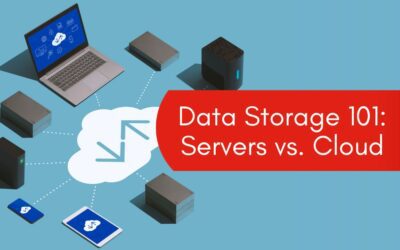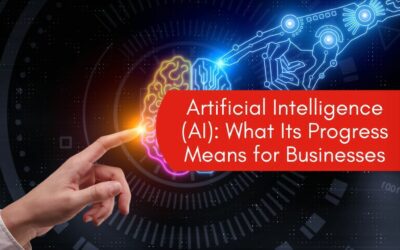It may come as no surprise that artificial intelligence (AI) is starting to have a profound impact on our society and how we function. For years now, in fact, businesses like Netflix and Amazon have used forms of AI to operate. Now more than ever, however, AI is changing the way we function and do business.
From manufacturing to shipping, marketing, and how we then use those products, artificial intelligence is woven into almost every level of operation and our daily practices. And the more advanced AI becomes, the more it will grow and change, affecting our future in so many ways.
Already, new forms of AI are popping up all around us, being implemented into systems and products that we use every day. Machine learning and deep learning, for example, are gaining more and more traction as businesses integrate these forms of AI into their operations and their products.
But what are machine learning and deep learning exactly, and how do they differ? Before we can compare the two, it’s first helpful to break them down individually.
WHAT IS AI?
To start, let’s talk about what artificial intelligence is at a basic level. Essentially, machine learning is a form of AI, and deep learning is a more advanced version of machine learning. So it helps first to understand what AI is and how it began.
Despite the name, early forms of AI were not actually intelligent; rather, scientists designed them to mimic intelligence. Machines, computers, and other devices that appeared intelligent were simply doing what they were told to do to simulate the way humans think and act, but they weren’t performing those actions on their own.
AI initially required humans to input data and code in systems in order to function. There was no learning involved on the part of the machine. They were like ghosts of actual human beings—saying and doing things that looked the part, but it wasn’t real. Of course, the goal was to eventually have computers learning and acting on their own, which led us to the evolution of AI and machine learning.
WHAT IS MACHINE LEARNING?
Machine learning is the next step up from early forms of AI. Systems that use machine learning use algorithms to interpret data and then use the data collected to make more informed decisions. While this does appear like true intelligence – a machine that learns from data to make optimized decisions going forward – it still requires the input of information first before it can learn from it.
A machine learning system only works if a human first provides the data that it then uses to get better over time. Examples include music and video streaming services that make recommendations based on your viewing or listening history. It’s smart, there’s no doubting that, but it still requires us to first provide the information it needs before learning from it. It is not simply learning on its own.
WHAT IS DEEP LEARNING?
Deep learning is like machine learning but with enhanced capabilities. Deep learning machines use advanced algorithms, sophisticated mathematical models, and coding to adapt, learn, and provide more accurate results and decisions over time. While this does sound almost exactly the same as machine learning, there is a difference.
Deep learning systems analyze data more similar to how humans draw conclusions – this more-advanced learning application made up of layers and layers of algorithms is called an artificial neural network. This neural network is inspired by the human brain, which leads to a process of learning that is more capable than more standard machine learning systems.
A deep learning machine can collect data on its own and draw a conclusion based on that data. It doesn’t necessarily require a human to purposefully input data or information into the system for it to work.
An example of this is sound-recognition software. Deep learning systems can use sound recognition to draw a conclusion and perform a task, like turning the lights on when someone says the word “dark.” Over time, as the system gets smarter, it may even draw the conclusion that the lights need to be turned on when someone says they can’t see or makes a comment about not being able to find the light switch.
COMPARING MACHINE LEARNING & DEEP LEARNING
To show a comparison of machine learning vs. deep learning, let’s use the sound-recognition example again. A machine-learning system will only ever turn the lights on if someone says the word “dark” because that is what it was taught to do. In contrast, a deep learning system will use its neural network to eventually draw conclusions based on other phrases that it believes are in relation to the word “dark” and the lights needing to be turned on.
Machine-learning systems do learn and become better over time, but only with our guidance and input. If a machine-learning algorithm makes an inaccurate decision or prediction, someone would need to step in and fix the function or the algorithm.
However, a deep-learning system can adapt and make adjustments on its own using its neural network. Over time it can determine whether a conclusion or prediction is accurate and is less reliant on human intervention to fix an error.
THE FUTURE OF AI
Overall, AI systems are already having a significant impact on the way we function and interpret data. Biometric authentication systems, for example, are already widely available and will only continue to improve and get smarter. With the way we share and store information, advanced security systems are necessary to protect our data.
With voice- and face-recognition software, there is no need to retain information like passwords, and it also makes it more difficult for someone other than ourselves to hack in. Anything can be hacked, of course, but with biometric data, it is much more challenging to do so.
Most AI systems that utilize machine-learning and deep-learning models are in place to improve the way we function and make our lives more convenient, which means scientists will only continue to advance these systems, providing unlimited possibilities for the future of business and our society.




